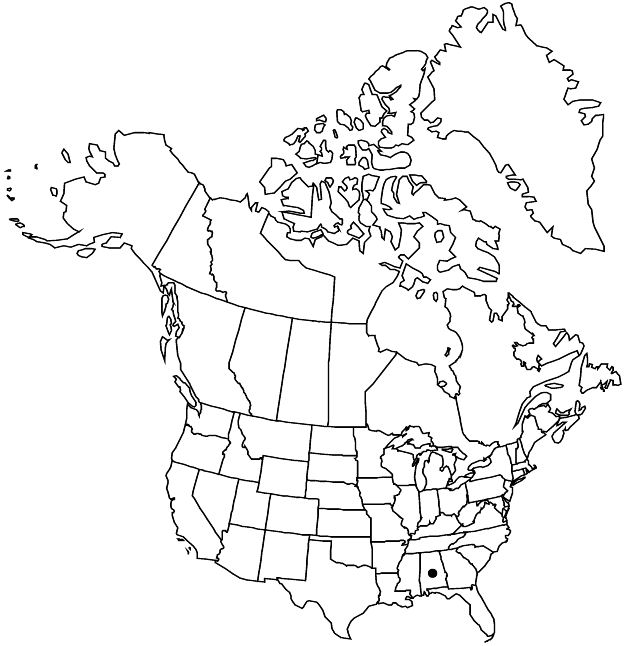Crataegus annosa
Biltmore Bot. Stud. 1: 83. 1902.
Trees, 80 dm. Stems: trunk bark dark, rimose; twigs not recorded; thorns on twigs ± straight, 1-year old chestnut brown or gray, slender, 2–3 cm. Leaves: petiole slender, length 25–50% blade, pubescent (at least young), sessile-glandular; blade rhombic-elliptic to obovate or obtrullate, 2–4 cm, texture and base not recorded, lobes small across apical part, sinuses, lobe apex, and margins not recorded, veins 2 or 3 per side extension shoots with 3–4 pairs, apex not recorded, surfaces sparsely pubescent. Inflorescences 3–5-flowered; branches densely pubescent; bracteoles not recorded. Flowers 15–20 mm diam.; hypanthium pubescent; sepals 3–4.5 mm, margins glandular-serrate; stamens 20, anthers ivory; styles 3–5. Pomes reddish orange to yellow, washed red, suborbicular to broadly ellipsoid, 10–12 mm diam., pubescence not recorded; sepals reflexed; pyrenes 3–5.
Phenology: Flowering Apr; fruiting Sep.
Habitat: Brush
Elevation: 50 m
Discussion
Crataegus annosa is typical for ser. Apricae in foliage and fruit, but in anther number and color, and in the narrower short-shoot leaves, it is typical of ser. Lacrimatae. It is known only from syntype specimens and is only doubtfully placed in ser. Apricae.
Selected References
None.
